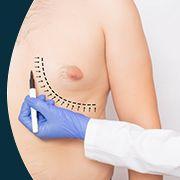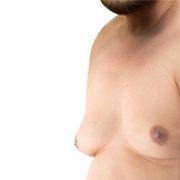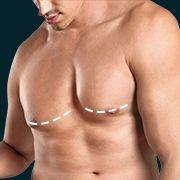Treating Lipoma without Surgery: Exploring Alternatives
In This Article
Treating Lipoma without Surgery: Exploring Alternatives
Dr. Sameena
Updated on April 05, 2024
Medically verified by Dr. Arya
Fact checked by Dr. Pournami

Cosmetic
10 min read
Can we treat lipoma without surgery? Are they safer? Does lipoma recur after treatment without surgery?
Have these doubts been concerning you? Don’t worry! Mykare Health is right here for you explaining in detail about lipoma and its treatment.
We will be explaining how to treat your lipoma without any surgery procedures. Let’s delve into the details.
What is a Lipoma?
A lump on your body which is soft to touch, squishy in nature and moves readily under your finger pressure. It consists of fat cells
What Causes a Lipoma?
-
Lipomas develop for unknown reasons.
-
They are inherited; if anyone in your family has a lipoma, you are more likely to get one.
-
Certain conditions that may cause more than one lipoma to form on the body include:
-
Dercum’s disease: An uncommon condition that induces painful lipomas to form on the arms, legs and trunk. It is also known as adipose Dolorosa or Anders’ syndrome.
-
Gardner syndrome is a familial adenomatous polyposis (FAP) condition that produces lipomas and several other health issues.
-
Hereditary multiple lipomatosis: This condition, also known as numerous familial lipomatosis, is hereditary (passed down through families).
-
Madelung’s disease: This is especially common in males who drink excessive alcohol. Madelung’s illness, also known as multiple symmetric lipomatosis, induces lipomas to form throughout the neck and shoulders
Is Lipoma Prevalent ?
1. Lipomas are prevalent and affect about 1 in every 1,000 persons.
2. Lipomas are common between the ages of 40 and 60 but can occur at any age. They can even appear at birth.
3. Lipomas affect both men and women. However, it is more prevalent in women.
Symptoms of Lipoma
Lipomas are typically encapsulated and they do not spread to the surrounding tissues.
Painless: Some lipomas may cause irritation or discomfort due to their location, thickness and the presence of blood vessels and nerves , like ears; legs
Round or oval-shaped: The rubbery fatty lumps are generally symmetrical.
Moveable: They are located just under the epidermis and slide when touched with finger pressure
Less than 2 inches in diameter: Lipomas can grow to be more than 6 inches broad rarely.
Home Remedies for Lipoma
Here is what you may have been looking for. How can you treat lipomas without surgery? Let’s talk about some home remedies that can help you do so.
Make a balm using herbs and natural oils
-
Natural oils such as flaxseed and neem make good bases for ointments. As a result, you can experiment by combining these ingredients or utilizing them individually as needed.
-
This balm will provide comfort to the fatty masses. Neem oil acts as an antiseptic, protecting your skin from infections.
-
For a very long time, it has been used to relieve lipomas temporarily.
-
Omega-3 and omega-6 fatty acids are found in flaxseed oil and they are beneficial against inflammation produced by lipomas.
-
You may make oil from neem and flaxseeds or purchase the oil from a store.
Combine black pepper with natural oil or tea as a base:
Black pepper is an element that has been popularly used for weight management. As a result, it is thought to be an effective natural therapy for lipomas. Take one teaspoon of black pepper, one teaspoon of neem oil or flaxseed oil and you may alternatively form a paste using chilled tea and apply it directly on the lump.
Apply Turmeric:
To produce a lipoma ointment, blend turmeric with neem oil or flaxseed oil. All of these substances have anti-inflammatory and therapeutic qualities. Prepare a paste and apply it to the lump. Cover it with a cloth to keep your clothes from getting stained.
Combine dried sage:
This is a known Chinese method that helps to dissolve the fat cells. Sage is rich in plant-based antioxidants that burn the fat cells. You may also combine 1/2 teaspoon of dried sage with 2-3 teaspoons of neem and flaxseed oil. You can coat your lipoma with this mixture and cover it with a bandage.
Make dietary adjustments:
-
Changing your diet may be effective for people with lipoma. Limit your consumption of red meat and ensure that it is free of chemicals and steroids.
-
Instead of red meat, explore options such as lean chicken, tofu and beans, which are equally high in protein.
-
Switch to eating more natural products in order to limit your intake of contaminants and chemicals.
-
Keep alcohol intake and smoking at a minimum level, as it can have an adverse effect.
Fruits and Vegetables
Fruits and vegetables are rich in antioxidants that help to reduce fat from your blood. The antioxidants cleanse your body of the excess fat and other toxins and boost up your immune system. Choose brightly coloured fruits and veggies since they contain the most antioxidants like raspberries , blueberries and plums
Fish
Fish consists of high quality proteins and omega-3 fatty acids that help to get rid of lipomas. These fatty acids reduce the inflammation in your body and limit the growth of fatty tissues under your skin. Omega-3 fatty acids inhibit the secretion of leptin, a hormone that decreases appetite and promotes burning of fat. Salmon and tuna fish are rich in omega-3 fatty acids and vitamin B12 that help burn fat.
Lean meat and eggs
These are packed with muscle-building high quality proteins. Proteins reduce the hunger hormone thereby controlling the body’s metabolism and aids in fat reduction.
Whole grains
Consuming whole grains like barley, brown rice, quinoa, finger millet (ragi) help increase the loss of calories by reducing calories retained during digestion and speeds up metabolism.
Green tea
Antioxidants present in green tea promote burning of fat by improving your body’s metabolism. You can consume green tea at least twice daily to burn out fat effectively and limit the growth of lipomas. Green tea is also known to prevent the lipoma formation and to shrink the already existing lipomas.
Caffeine
Caffeine acts as an effective stimulant in your body that aims to burn fat. It reduces energy intake and boosts metabolism.
Water
Water improves your overall health and helps flush out excess toxins from your body. Water increases your resting energy expenditure, the number of fat cells burnt while resting. Drink at least 1 to 2 liters of water everyday to reap the benefits.
Weight Management:
Maintaining a healthy weight through regular exercise and a balanced diet may also be beneficial in managing lipomas. Obesity and lipoma development are often linked, so achieving and maintaining a healthy weight can reduce the risk of new lipomas forming and may even help shrink existing ones.
What Foods Should be Avoided?
Foods that increase the likelihood of developing certain health issues. In case of lipomas, foods that increase the fat content of your body put you at a higher risk for developing them. Risk factors like diabetes (high blood sugar levels), alcohol abuse, etc, increase the development of lipomas in your body.
Dairy products
Dairy products like butter, and cheese when consumed in large amounts can lead to the accumulation of fat cells that may lead to lipomas.
High sugar intake
-
High sugar intake can predispose you to developing diabetes which is a prime risk factor for developing lipomas.
-
Excess sugar in your bloodstream is converted into fats and stored below your skin, transforming it into a lipoma.
Alcohol
-
Alcohol is considered as “empty” calories with little nutrients, leading to unnecessary fat accumulation.
-
When you consume excess alcohol, the excess glucose and lipids end up as adipose tissue, or fat.
Packed foods and preservatives
-
Packed foods and preservatives put an increased load on your liver, losing its ability to flush out toxins and sugar.
-
These excess toxins and sugar are stored as fat between your skin and muscle layer, forming fatty lumps.
Know Your Red flags & When To Consult a Doctor
-
It’s critical to get checked and rule out any dangerous illnesses like liposarcoma (a type of cancer).
-
If you are bothersome about cosmetic appearance or painful
-
If you find something unusual like getting enlarged suddenly and at inappropriate areas of our body
Lipoma Treatment without Surgery
Lipomas generally don’t need to be removed. But consider removing when
-
causing pain
-
bothering cosmetically
-
Getting bigger
-
Fear of malignancy
The quick squeeze method is best suited for subcutaneous lipomas with overlying mobile skin. Deep intramuscular lipomas often found in the back or shoulder region may require longer incisions and more dissection for complete removal.
However, the method is still safe, simple, and effective in spite of these factors. Also, this method does leave a small scar directly over the lipoma, but most incisions can be hidden along skin tension lines.
Liposuction: Liposuction is another option for lipoma treatment. This procedure involves making a small incision near the lipoma and using a thin tube (cannula) to remove the fatty tissue. Liposuction is particularly suitable for larger lipomas and offers the advantage of minimal scarring compared to traditional excision.
 9 min read
9 min readThe Advantages of Choosing Mykare Health for Gynecomastia Surgery
 6 min read
6 min readIdentifying The Ideal Age For Gynecomastia Surgery
 6 min read
6 min readPre and Post Gynecomastia Surgery: Essential Things to Know
Get a Callback Now
Advantages of liposuction for lipoma treatment
-
Reduced scarring.
-
Faster recovery compared to excision.
-
Effective removal of larger lipomas.
-
While liposuction can be an excellent choice for certain lipomas, it may not be suitable for all cases, such as those located near vital structures.
Steroid Injections
For individuals who prefer non-surgical options, steroid injections can be considered for lipoma treatment. A healthcare provider injects a corticosteroid medication directly into the lipoma. The steroid can help shrink the lipoma over time.
These steroid injections may not provide permanent results. Multiple sessions may be necessary to achieve the desired reduction in size.
This method is often chosen when surgery is not a viable option due to factors like the lipoma’s location or the patient’s overall health.
Laser Therapy
Advancements in medical technology have introduced laser therapy as a non-invasive option for lipoma treatment. It uses focused laser energy to break down the fatty tissue within the lipoma, causing it to gradually shrink and be absorbed by the body.
Laser therapy offers several advantages, including:
-
Minimal scarring.
-
Less pain and discomfort compared to surgery.
-
The potential for outpatient treatment.
While this method is less invasive, it may require multiple sessions to achieve the desired results. Laser therapy is a promising option for individuals who prefer non-surgical approaches.
FAQs
1. Why lipoma is called a universal tumor?
It can occur anywhere on the body like neck, shoulders, back, abdomen, arms and thighs. and hence called as universal tumor.
2. What is the treatment for lipomas?
Lipoma excision or removal is a simple and quick procedure and you generally go home the same day of the surgery.
Steroid injection causes squeezing of lipoma content and is effective. Liposuction may be recommended as an alternative to lipoma surgery. In liposuction, your physician will use a long, thin needle to remove fatty tissue from the lump or growth on the skin
3. Is surgical removal the only option for lipoma treatment?
No, there are non-surgical options like steroid injections, liposuction, and laser therapy available for lipoma treatment.
4. Are lipomas always a cause for concern?
Lipomas are generally benign and not a serious health risk; however, treatment may be considered for cosmetic or discomfort-related reasons.
Lipomas are fat-containing lumps that can grow anywhere on our body
Diet plays an important role in causing and preventing certain diseases. The nutrients we consume help regulate our body’s metabolism and digestion.
Hence to prevent the formation of lipomas or to reduce their size, you need to reduce the fat content in your body.
Include foods beneficial to reducing fat, like fruits, vegetables, protein, and omega-3-rich foods like eggs, lean meat, fish, etc. The antioxidants are important components of your diet that effectively reduce or burn out fat.



